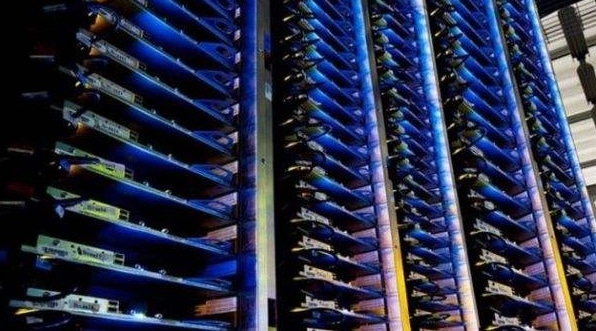
Recently, the Data Center Optical Communication Industry Summit Organizing Committee and China Data Center Industry Development Alliance hosted the “2018 China Data Center and Optical Communication Application Forum”, Alibaba Optical Network Department Technical Director Dr. Wang Anbin gave a detailed introduction to the optical module of Alibaba Data Center and Alibaba’s optical interconnection system, including the evolution of Alibaba’s data center and optical modules.
Wang Anbin mentioned that the first generation of Alibaba’s data center network is 40G, the next generation is 100G data center network, and then everyone is optimistic about 400G. Regarding the technology of 100G Server-to-Switch interconnection in the data center, the first generation is 4*25G NRZ technology, and the next generation is probably 2*50G PAM4 technology, while Dr. Wang listed four servers under 100G interface. The interconnection technology with Switch includes QSFP DR1, SFP DD (DR1), QSFP BIDI and SFP DD (SR2), while Dr. Wang believes that SFP DD (SR2) is likely to become the core of next-generation data center 100G interconnection. technology.
For the requirements and challenges of 100G AOC, Wang Anbin emphasized that in terms of power consumption, the future AOC can be lower than 2.5W. In terms of cost, the advancement of this technology will also reduce the cost per Gbit. At the same time, it also brings challenges. A brief summary, the most critical challenge is that there is no Dedicated IC for this project, contributing to this product, and the challenge is signal integrity and heat dissipation.
For the next generation of 400G products, 400G SR4.2 technology brings us the value, one is to reduce the number of optical fibers, and there is more to one wavelength for the super 400G network. But it also brings some challenges. There is no exact standard at present. The choice of wavelength is 880nm, 910nm or 940nm, and whether there are enough chip manufacturers to provide VCSELs with different wavelengths, and whether the whole ecosystem is suitable for 400G SR 4.2 to develop.
For the 400G DR4 technology, mainly including EML, Si-Photonics (silicon photonics technology) and DFB, Dr. Wang proposed an open question for these three technologies. “If these three technologies, 400G DR4 optical modules can be used, they Is there a risk of interconnection between them?” and said that this issue needs to be considered both in chip design and module design. After discussing 400G FR4, its core technology is similar to 400G DR4.
After the comparative analysis, Dr. Wang said: “100G SFP DD AOC is the best AOC technology for interconnecting Server and Switch, although it has many challenges. While interconnecting between switches, hybrid single-mode and multi-mode technology is The most appropriate, 400G SR4.2 is the most promising if technically feasible. At the same time, single-mode 400G DR4 and FR4 will also be adopted and will become mainstream.”
Regarding the requirements and demand direction of optical communication products in data center optical interconnection, Dr. Wang Anbin said that the demand for optical communication products should be more to solve the problem of the chip layer. Dr. Wang said that the new technology solution for optical communication provides a technology dividend for optical interconnect companies, and the standard for measuring high-quality optical network products is the cost per Gbps and the power consumption per Gbps. Especially for power consumption, it is best to improve performance without changing the existing network architecture. In terms of power consumption, the power consumption of the chip can be solved with the semiconductor process from 28nm to 18nm, 10nm, but light The chip can’t continue the solution of the electric chip.
In the digital communication market, the contribution of China’s optical communication companies is very large. Domestic chip companies such as Huaxin Semiconductor are very hard. Therefore, it is also expected that the ZTE event will arouse the support of the national and private capital markets for optical chip investment, and this investment is not a short-term behavior, but a long-term and steady investment.
Article source: http://www.c114.com.cn/